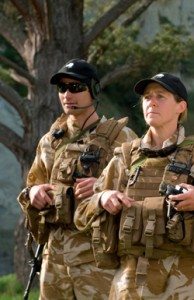New Zealand Defence Force (NZDF) troops deploying to Afghanistan this October will be equipped with the latest, battle tested body armour and protective equipment.
The Army has invested in a variety of gear, from patrol packs to ballistic glasses, to ensure the modern soldier is equipped to do the job they need to do on operations overseas.
The improved body armour has been developed based on lessons learned in Afghanistan and Iraq. The body armour is a Special Forces variant and is currently in use with US Navy SEAL’s and US Army Rangers.
The protective equipment includes new, lighter combat helmets, improved body armour, ballistic goggles and gloves, modular webbing and pouches, an enhanced individual torch, ergonomic camelback patrol pack, and for some, an improved hand-held GPS unit.
“While the soldier is the first part of Army capability, it is also about ensuring our soldiers are well-equipped to do the job they are required to do,” says the Chief of Army Major General Rhys Jones.
 “This new protective equipment will enable our soldiers to undertake the tasks and demands we require of them in a range of complex operational environments like Afghanistan, Timor-Leste and the Solomon Islands.”
“This new protective equipment will enable our soldiers to undertake the tasks and demands we require of them in a range of complex operational environments like Afghanistan, Timor-Leste and the Solomon Islands.”
The equipment will be first used by NZDF personnel deploying to Afghanistan in October. Remaining missions will be supplied with equipment in order of threat level over the next six months.
“There are currently 790 New Zealand Defence Force personnel deployed on 14 operations, UN missions and defence exercises in 10 countries around the world,” MAJ GEN Jones says. “They are often twelve months away from their families and the Army is committed to investing in their safety by ensuring they have the equipment and training to achieve their goals to a world-class standard.”
The new equipment is lighter, more comfortable and provides the wearer with enhanced ballistic and fragmentary protection. The modular system can also by personalised by the soldier in how they attach the pouches to their webbing.
The current operational pool of equipment will be distributed for wider Army training purposes as the new equipment is phased in.
Feel free to download a poster of the new NZ Survivability Kit PDF [2,352] for NZ troops.
Quick Facts – Soldier Survivability Equipment
- The new advanced combat helmet is 0.5kg lighter than its predecessor, has an internal mounting system that makes it more comfortable to wear and allows greater functionality with ballistic glasses or communications equipment.
- The improved body armour (IBA) provides enhanced ballistic and fragmentation protection and is now sized to the individual rather than one-size-fits-all. The IBA also includes side, groin and bicep protection should it be required by the wearer and has a modular webbing system so soldiers can customise the pouches they attach directly to their webbing.
- The IBA is fully modular and also has a quick release system to enable the user or another person to discard the vest quickly if the user is injured or submerged in water.
- The improved patrol pack is ergonomic in design, has an adjustable, removable back comforter and is adjustable for height.
- The Revision Desert Locust ballistic goggles were selected as they offered the greatest durability and functionality. These protect the wearer against blast fragmentation and other non-ballistic threats whilst also protecting the eyes from wind, sand, dirt and snow.
- New individual general purpose torch: The Sidewinder stood out as the individual torch choice as it is small, light-weight and has excellent functionality. It provides four types of light: red, blue, white and Infra-red. It has four levels of brightness on each including a strobe function. The torch also comes with a helmet mount so that it allows a hands-free operation. With the IR function it significantly improves the local area illumination when used with night vision goggles.
- Improved individual GPS: The Garmin 60cX GPS is a unit that provides a cheap but very functional GPS. The Garmin provides colour mapping and new maps can be downloaded via the internet as required. The users found it easy to operate and accurate as an individual navigation aid for tactical commanders.









